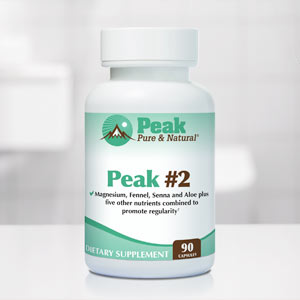Get Easy Health Digest™ in your inbox and don’t miss a thing when you subscribe today. Plus, get the free bonus report, Mother Nature’s Tips, Tricks and Remedies for Cholesterol, Blood Pressure & Blood Sugar as my way of saying welcome to the community!
What’s stealing your magnesium?

Over the past 100 years, some of us humans have been experiencing a dangerous theft…
Our magnesium intake has gone from 500 mg day to 175-225 mg day, which is well below the recommended intake.
In fact, a magnesium deficiency is one of the most common nutrient deficiencies in developed countries, most commonly among middle-aged and elderly folks. Experts blame industrialized agriculture and changing diets.
Considering that magnesium is involved in hundreds of enzymatic functions in your body — and also makes up about one percent of the mineral in your bones — it’s no wonder more of us are suffering from…
- Diabetes: Findings from the Harvard Nurses’ Health study, the Health Professional Follow-up study and the Iowa Women’s Health study, people with the highest magnesium levels had the lowest risk of developing diabetes.
- Heart disease: The journal Nutrition Research reported on a study of more than 10,000 people in the United States, which showed that those who consumed the daily recommended amount of magnesium “demonstrated lower levels of C-Reactive protein. Elevated C-Reactive protein is quickly becoming one of the most powerful predictors of heart disease.”
- Cholesterol: Clinical studies have shown magnesium to lower total serum cholesterol and lower elevated triglycerides levels. It decreases the “bad” LDL cholesterol and raises the “good” HDL cholesterol.
- Chronic constipation: Magnesium also helps relax the muscles in the intestines, which promotes the intestinal movements (peristalsis) that move stool through the digestive tract.
And our bones are really suffering too…
Researchers followed 2,245 middle-aged men over a 20-year period, tracking their magnesium levels and any bone fractures they experienced. The results revealed that the men who had lower blood levels of magnesium had an increased risk of experiencing fractures, especially hip fractures.
But not just a small risk, the risk of sustaining a fracture was 44 percent higher among the men who had lower levels of magnesium in their bodies.
I can only imagine how this is affecting women who already have a struggle on their hands when it comes to bone health.
Getting and keeping your magnesium levels
The current recommended intake for magnesium is 320 mg a day for women and 420 mg a day for men, 31 years and over. But most people fall well below this mark.
To ensure you’re getting enough magnesium in your diet, consuming food sources that are high in this vital mineral is essential.
Magnesium-rich foods include:
- Pumpkin seeds, 3.5 ounce = 594 mg magnesium
- All bran, 1/2 cup = 112 mg
- Brazil nuts, 1 ounce = 107 mg
- Chia seeds, 1 ounce = 95 mg
- Brown rice, 1 cup = 86 mg
- Fish, mackerel, 3 ounces = 82 mg
- Spinach, 1/2 cup = 78 mg
- Almonds, 1 ounce (23 nuts) = 77 mg
- Swiss chard, 1/2 cup = 75 mg
- Lima beans, 1/2 cup = 63 mg
- Peanuts, 1 ounce = 48 mg
- Banana, 1 whole = 32 mg
- Beets, 1 cup = 31 mg
- Many other vegetables, fruits and nuts
Although consuming magnesium-rich foods is one beneficial strategy, another complicating factor is that as you age your body can’t absorb minerals as well as it used to, which means eating magnesium-rich foods may not be enough on its own.
So, you may also want to add a magnesium supplement to your daily routine. When choosing a supplement, look for the types that are more readily absorbed by the body — magnesium amino acid chelate, magnesium phosphate, magnesium glycinate, magnesium orotate, magnesium citrate, and magnesium threonate.
But you also need to watch out for things that steal it from you…
- Avoid caffeinated drinks and alcohol: Caffeine is a diuretic and can speed up the loss of minerals from your body. Acidic drinks, like coffee, can make it harder for your intestines to absorb nutrients.
- Manage your stress: It looks like people who experience chronic stress tend to be low in magnesium, and people with sufficient magnesium experience less stress. It’s a win-win situation to find ways to manage your stress better and to boost your magnesium.
- Think twice about a water softening system: Hard water can cause mineral build-up in pipes and fixtures, so many people install water softeners. But when you do that you cut down on a significant source of magnesium. One study found that 2 liters of some municipal tap waters could provide up to 30 percent of the daily requirement of magnesium for some adults.
You can also indulge in a warm Epsom salt bath to relax your muscles and increase your magnesium levels at the same time. Epsom salts are made of magnesium sulfate and the magnesium absorbs into your body via your skin.
Editor’s note: What do you really know about stroke? The truth is, only 10% of stroke survivors recover almost completely, and all doctors can offer is what to do after a stroke occurs. That’s unacceptable considering 80% of strokes are preventable! Click here to discover how to escape The Stroke Syndrome: 5 Signs it’s Stalking You — Plus the Hidden Causes and Preventive Measures You’ve Never Heard About!
Sources:
- Magnificent Magnesium — Easy Health Options
- Kunutsor S, et al. Low serum magnesium levels are associated with increased risk of fractures: a long-term prospective cohort study. — European Journal of Epidemiology. 2017;32(4):257-259.
- Magnesium In Drinking Water Sources — Center for Magnesium Education & Research
- Grober U, et al. Magnesium in Prevention and Therapy. — Nutrients. 2015;7(9):8199–8226.
- Magnesium — Oregonstate.edu. (2014). Linus Pauling Institute. Retrieved 29 June, 2017.














